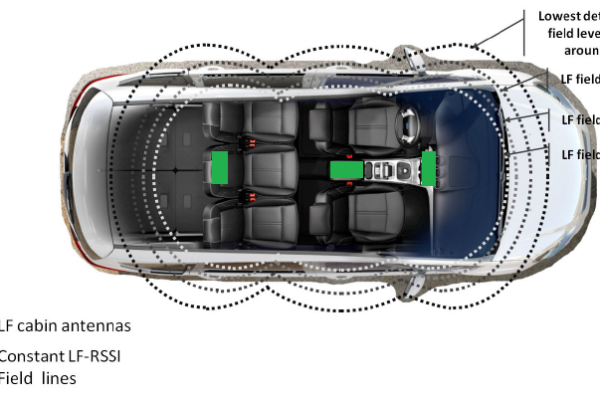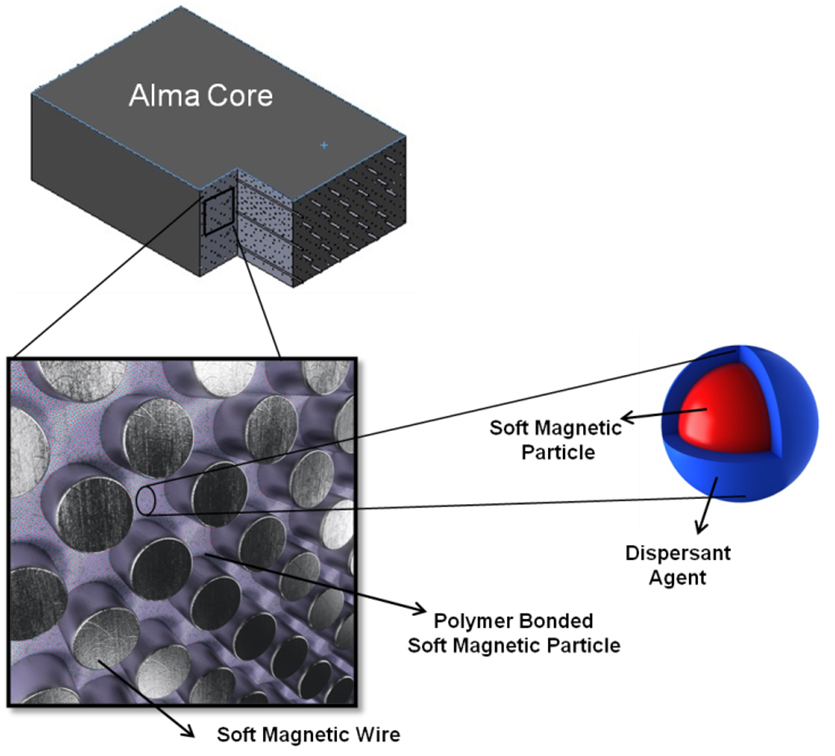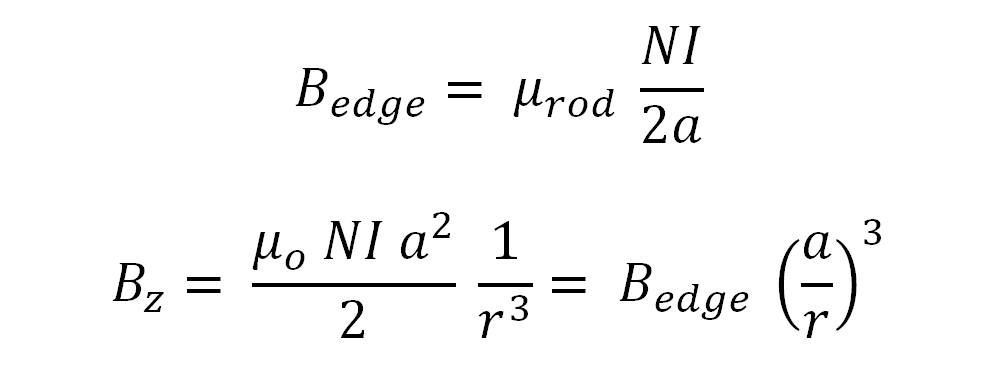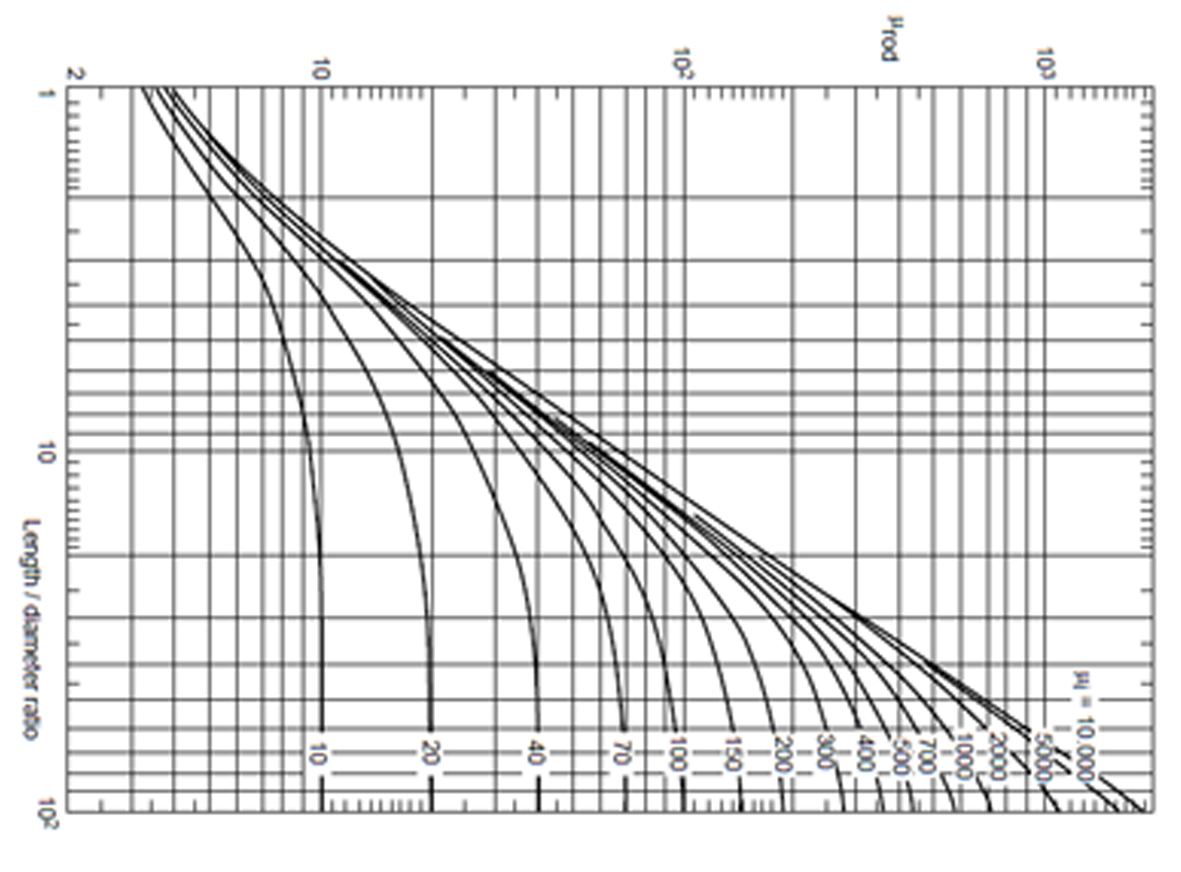
Long-range RFID emitter antennas for passive keyless entry systems
Most of us have had the tedious routine of unlocking the doors using a physical key, looking for the right one among a cluttered bunch after feeling a sting in your pocket pierced by a sharp point.
Currently, most of the vehicles are equipped with remote keyless entry (RKE), allowing the driver to control the car from a distance. If the driver presses the button on the fob, then the car doors automatically lock or unlock. But in the near future the trend is to introduce PKE at an affordable price, as it is the most comfortable one. A study from Research and Markets estimate that the global automotive passive keyless entry system market to grow at a CAGR of 10.6% during the period 2016-2020.
The principle of operation can be summarized as follows, when a trigger event occurs such as approaching the car or touching the door handle, a low powered LF wake-up signal is transmitted to the key fob. Afterwards, an ultra-high frequency (UHF) identification response is sent back to the car. Once the mutual authentication has been processed through the UHF channel, the car door opens.
LF communication is set to 21.8 kHz, 125 kHz or 134 kHz via Binary or Quad Pulse Length Modulation for different purpose: LF Wake-up, Anti-collision and RSSI measurement. LF Wake-up is a predefined string of bits to recognize the key fob in a very low consumption sleep mode. Once the signal is processed, the key answers back to wake up the PEPS controller. Anti-collision is a method to avoid interference from simultaneous fobs signals in case several keys are in use. RSSI measurement, received signal strength indication, is performed by the key to determine it position by measuring the magnetic field strength for the X, Y and Z axes.

In order to localize the fob, the car is equipped with several emitter antenna (LF driver) strategically distributed. Usually there are three inside to cover the cabin space and another three on each handles for the outside coverage. This creates an isotropic field space all over the car. The final distribution and number of antennas depends on the size and geometry of the vehicle.

The R&D team at Premo has invented a new concept of emitter antennas by introducing two patented flexible and semiflexible magnetic materials that allow making long-range antennas. Based on the reduction on the number of antenna per car, the new design is longer than the standard 120mm door handle, with a length ranging from 300-500mm.
The researchers followed two independent strategies to circumvent the materials’ brittleness and achieve a higher magnetic field strength. They blended long highly permeable magnetic microwires with polymer bonded soft magnetic particles (Alma core).

This approach allows for a reduction of the number of emitter antennas up to three folds. The resulting car architecture will drive significant cost savings that will further increase the PES adoption. In terms of material, wiring length and number of connectors could be reduced by a third, the same for the electronic drivers and amplifiers. Fewer components mean less probability of failure. Reducing the number of drivers will also limit overheating in their devices, which increase the reliability of the system. With respect to OEM, assembly time could be reduced substantially.
It is known in the sector that aspect ratio (length/diameter) is a key parameter to achieve higher reading range. A longer antenna requires less power to reach the same magnetic field, lowering the energy consumption. The rod permeability of an inductor is not equal to the material permeability due to the big air gap where the magnetic field propagates.
The system follows a series model of material core reluctance plus air gap reluctance. Reference article from Alan Payne “Inductance derived from capacitance” makes an analogy of the coil magnetic field to a dipole antenna electric field, expressed by formula 1:

Where Rin air and Rout air is reluctance of a coil inside and outside the coil respectively, k is the apparent permeability of the outside path, μf is the permeability of the ferrite, lc is the coil length and dc is the diameter of the coil.
The magnetic field in the edge of an antenna and at a point larger than it radius is governed respectively by formula 2:

Where N is the number of coil turns, μ0 is the air permeability, μrod is the relative rod permeability, I is the current passing through the wire, a radius of the coil, r transversal distance from the center of the coil.
It is easy to deduce from the above equation that to reach higher Bz greater μrod is required. Therefore, the higher the core length to diameter ratio the better magnetic field is accomplished.
An experimentally deduced graph provided by Ferroxcube makes evident the significant impact of the mechanical core dimension with respect to the final core permeability. Our new solution almost double the aspect ratio from previous product which could result in a ten fold relative rod permeability improvement according to this graph. The material permeability is another parameter to take into account, with greater material permeability greater is the effect and treshold of the aspect ratio and consequently better rod permeability is obatined. Amorphous microwire can reach up to 100.000 realtive permeability so that this makes them really good candidates.

Current manufacturing relies on uniaxial pressure sinterization process which limits the length of the bar to 120 mm. Ferrites are ceramic, similarly to glass, extremely brittle and fragile. In order to avoid fatal damage of the core, protective coating and plastic overmolding are essential. A crack in a ferrite inside an antenna or inductor produces a high reluctance magnetic path of the field thus reducing the effective permeability and dropping the inductance, that if the application is a resonant tank for an antenna, leads to a higher self-resonant frequency of the tank and makes the circuit operate out of specifications or even do not operate at all as the energy transmitted to or by a not tuned tank can be too low to let the circuit operate as a signal transceiver.
Our first approach presented in the International Trade Fair for Electronics Components, Systems and Applications in Munich 2014 is currently in advanced state with great expectations, settled in a consortium with top research institutions such as Centro de Electrónica Industrial (CEI-UPM), Instituto de Ciencia de Materiales de Madrid (ICMM-CSIC), and Grupo de Síntesis y Procesado de Materiales (SIPMAT-UC3M) is under a research and development project granted by Centro para el Desarrollo Tecnológico Industrial (CDTI).
Polymer bonded magnetic (PBM) blend is envisioned as a solution to withstand drop test and lower the weight. The elastic bonding between particles and polymeric matrix provide an ideal damping behavior and simultaneously weight reduction from lowering particles content up to 70% and limiting protective plastic case material. Soft magnetic micro-nano particles are homogeneously distributed and electrically insulated within the polymeric matrix by means of one or more dispersant agents incorporated to the uncured liquid polymeric medium. This configuration avoids any aggregation of particles which consequently reduce eddy current losses. In contrast to ferrite, PBM can adapt to any form, with absolute size and shape control, as it can be mould injected or mould and pour. Furthermore, this material present recyclability in manufacturing. Acoustically, this material has great energy absorption in audible range which offers another advantage, reducing noise from the antenna.
On the other hand soft magnetic microwires exhibit excellent mechanical and magnetic properties, with high magnetic permeability, magnetic field saturation, low coercitivity and great flexibility. The extraordinary performance of this filament like material comes from its fabrication technique, rotating-water quenching. An ultrafast cooling rate of 105 Ks-1 avoids crystallisation resulting in an amorphous structure, removing any magneto crystalline anisotropy which makes them extremely soft. The diameter of this wires range between 100 to 300 microns.

In conclusion, this innovation could drastically reduce the adoption of PKE system in automotive sector and speed up new features like approach lighting and walk-away detection.
About the author:
Jorge Rodriguez is R&D Engineer at Premo – www.grupopremo.com
 If you enjoyed this article, you will like the following ones: don't miss them by subscribing to :
eeNews on Google News
If you enjoyed this article, you will like the following ones: don't miss them by subscribing to :
eeNews on Google News




